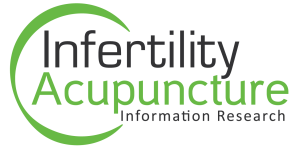Acupuncture and exercise restore adipose tissue expression of sympathetic markers and improve ovarian morphology in rats with dihydrotestosterone-induced PCOS
Louise Mannerås,1 Stefan Cajander,2 Malin Lönn,3 and Elisabet Stener-Victorin1
1Institute of Neuroscience and Physiology, Department of Physiology, Sahlgrenska Academy, University of Gothenburg, Gothenburg, Sweden; 2 Department of Pathology and Cytology, Sunderby County Hospital, Luleå, Sweden; and 3 Institute of Medicine, Wallenberg Laboratory, Sahlgrenska Academy, University of Gothenburg, Gothenburg, Sweden
Submitted 22 November 2008 ; accepted in final form 15 January 2009
Altered activity of the sympathetic nervous system, which innervates adipose and ovarian tissue, may play a role in polycystic ovary syndrome (PCOS). We hypothesize that electro-acupuncture (EA) and physical exercise reduce sympathetic activity by stimulating ergoreceptors and somatic afferent pathways in muscles. Here we investigated the effects of low-frequency EA and physical exercise on mRNA expression of sympathetic markers in adipose tissue and on ovarian morphology in female rats that received dihydrotestosterone (DHT) continuously, starting before puberty, to induce PCOS. At age 11 wk, rats with DHT-induced PCOS were randomly divided into three groups: PCOS, PCOS plus EA, and PCOS plus exercise. The latter two groups received 2-Hz EA (evoking muscle twitches) three times/week or had free access to a running wheel for 4–5 wk. In mesenteric adipose tissue, expression of ?3-adrenergic receptor (ADRB3), nerve growth factor (NGF), and neuropeptide Y (NPY) mRNA was higher in untreated PCOS rats than in controls. Low-frequency EA and exercise downregulated mRNA expression of NGF and NPY, and EA also downregulated expression of ADRB3, compared with untreated rats with DHT-induced PCOS. EA and exercise improved ovarian morphology, as reflected in a higher proportion of healthy antral follicles and a thinner theca interna cell layer than in untreated PCOS rats. These findings support the theory that increased sympathetic activity contributes to the development and maintenance of PCOS and that the effects of EA and exercise may be mediated by modulation of sympathetic outflow to the adipose tissue and ovaries.
sympathetic activity; ?3-adrenergic receptor; androgen receptor; nerve growth factor; neuropeptide Y
